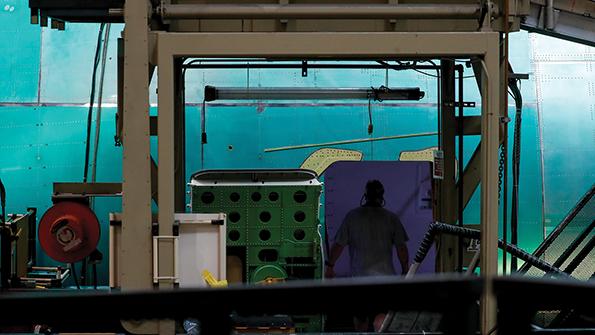
Boeing is one of several companies with multiple ODA approvals.
Companies that hold FAA designee authority that enables them to issue certificates and perform other work on behalf of the agency must incorporate new protocols designed to ensure affected employees are not pressured to ignore potential safety risks
A Sept. 7 agency notice makes formal the new Organization Designation Authorization (ODA) protocols, codifying a 2020 law that called for more protections of ODA “unit members (UM),” or employees delegated to represent the FAA internally. Among the requirements are documented procedures for monitoring interference among UMs, annual anonymous surveys soliciting feedback on whether workers have experienced or witnessed pressure, and establishing a process for addressing reports of interference.
ODA holders also must set up direct lines of communication with FAA Organization Management Teams (OMT)—mandated by the law to oversee ODAs—and make sure UMs are aware of how to use the channels.
“The FAA recognizes the importance of open communication between UMs and the FAA, and, with this notice, provides procedures to support this statutory requirement,” the agency writes in the notice, which took effect immediately. “The FAA recognizes that direct communication between UMs and the Organization Management Teams or other staff is an important part of the ODA system.”
OMT oversight will include “an annual evaluation of the effectiveness of the ODA holder’s processes in addressing interference and related issues,” the policy states.
While the law applied to manufacturers of transport-category aircraft, the FAA guidance “includes provisions that implement these statutory requirements for all ODA holders.”
The FAA’s list of ODA holders as of Sept. 15 showed the largest category was supplemental type certificate (STC) holders, at 42, followed by parts manufacturer approval (PMA) ODA holders, at 35. The most well-known ODAs are arguably the production certificate and type certificate holders that include major manufacturers such as Boeing, General Electric and Gulfstream. The FAA lists about 140 ODAs; many large companies hold authorizations in multiple categories.
Under the new policy, ODA holders also must develop training for both UMs and their managers regarding interference and how to report it, both internally and to the FAA.
The policy makes clear that interference goes beyond applying direct pressure, such as demanding a project be kept on schedule. Interference also can stem from conflicts that parallel work may create, such as an edict to minimize training on a new product. The language targets issues that Boeing created during the 737 MAX’s development, including a general mandate to limit training for pilots transitioning from previous versions of the model to the MAX family.
The 2020 law included several ODA-related mandates, including ordering the FAA to approve all UMs assigned by companies. Lawmakers’ focus on ODA—and Boeing’s problems in particular—stems from broader concerns about the program’s expansion over the last two decades and how several of the perceived weaknesses contributed to two fatal 737 MAX accidents in 2018 and 2019.
ODA units play a significant role in developing new aircraft, engines and products that require STCs. Transport-category aircraft certification project officials routinely delegate 90% of required work—measured in certification plans and deliverables within each plan—to company ODAs.
Although lauded by industry and the FAA, ODA expansion was raising red flags long before the 737 MAX accidents. A 2015 Transportation Department auditors’ report highlighted several issues, with most focused on FAA’s oversight of company ODA units.
Investigations following the 737 MAX accidents uncovered a more pressing issue: ODA UMs surveyed within Boeing said they often felt pressured to push projects along or ignore problematic issues rather than raise possible safety concerns. Those that wanted to speak up had no clear path to the FAA. The law and the new guidance are meant to address this, among other issues, while establishing consequences for noncompliance.
“An FAA delegation is a privilege and not a right,” the new FAA policy states. “Suspension or removal of specific areas of authority, as well as suspension or termination of all ODA holder authority, can be taken at any time by the OMT, if necessary.”
Boeing has made several changes that align with the new guidance, including a third-party survey of its UMs. The results, which the company released in August, suggest that workforce confidence in their ability to raise red flags without retribution is increasing compared with previous surveys. Boeing still has work to do, however, as nearly 25% of survey respondents acknowledged trepidation in raising safety concerns within the company.
—Sean Broderick




